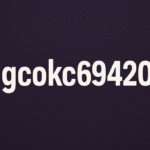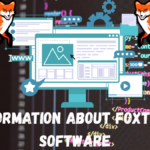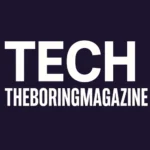As agencies scale, the pressure to efficiently manage a larger candidate pool, handle client relationships, and track performance increases. This is where an optimized recruitment platform and a well-integrated tech stack come into play.
But how do you go about building a winning recruitment tech stack? What tools should you choose, and how do you ensure they work seamlessly together? This guide will walk you through the essential components of a high-performing recruitment tech stack, helping you make informed decisions and implement a system that supports sustainable growth.
What is a recruitment tech stack?
A recruitment tech stack refers to the collection of software and tools that recruiters and staffing agencies use to streamline, automate, and optimize the recruitment process. It typically includes tools for sourcing, applicant tracking, candidate engagement, job board integrations, communication, analytics, and reporting.
A recruitment tech stack not only improves efficiency but also enhances the candidate experience and ultimately leads to better hiring outcomes.
Why is a recruitment tech stack important for scaling agencies?
As your staffing agency grows, you’ll find that manual processes or outdated technology can quickly become bottlenecks. With the right recruitment platform and tech stack, you can:
- Improve efficiency: Automate repetitive tasks like resume screening, interview scheduling, and follow-ups.
- Scale quickly: Integrate new tools and processes as your team and client base grow.
- Enhance collaboration: Centralize candidate data, making it easier for recruiters and hiring managers to work together.
- Provide data-driven insights: Use analytics to optimize your hiring process, from sourcing to placement.
When you’re building your recruitment tech stack, it’s critical to choose tools that integrate with each other and support your agency’s long-term objectives. With the right mix of platforms, you can scale your operations without sacrificing quality.
Key components of a winning recruitment tech stack
Building the ideal recruitment tech stack means choosing the right tools for each stage of the hiring process. Let’s break down the must-have components of your recruitment tech stack.
1. Applicant Tracking System (ATS)
An applicant tracking system (ATS) is the cornerstone of any recruitment tech stack. It manages all aspects of the recruitment process, from job postings to candidate sourcing to interview scheduling to text recruiting and hiring.
When selecting an ATS for your agency, consider:
- Ease of use: Ensure it has a user-friendly interface that both recruiters and hiring managers can easily navigate.
- Integration capabilities: Look for an ATS that integrates with other tools in your stack, such as job boards, CRM systems, and background check providers.
- Customizability: As your agency scales, you’ll need a solution that can adapt to your specific needs, whether it’s handling higher volumes of candidates or managing more complex workflows.
Popular ATS platforms include Recruit CRM, Greenhouse, and Lever, which are known for their scalability and advanced features.
2. Sourcing tools
Sourcing candidates is one of the most critical elements of recruitment, especially as your agency grows and you need to fill more roles across various industries. Sourcing tools help you find top talent faster and more effectively.
Some popular sourcing tools include:
- LinkedIn Recruiter: A must-have for many recruiters, this platform allows you to search and connect with candidates across industries.
- Job boards and aggregators: Platforms like Indeed, Monster, and ZipRecruiter are still valuable for posting job ads and sourcing candidates.
- Boolean search tools: Tools like Hiretual allow you to create advanced Boolean searches to find the right candidates beyond the basic filters on job boards.
For a growing agency, it’s essential to integrate sourcing tools with your ATS so that candidates are automatically added to your pipeline.
3. Candidate engagement and communication tools
Engaging with candidates is crucial to maintaining a positive recruitment process. As you scale, it becomes increasingly important to communicate efficiently with a large pool of candidates without overwhelming your team.
Candidate engagement tools can help you automate email sequences, manage candidate relationships, and even send personalized messages at scale.
Some top tools to consider:
- Mailchimp or HubSpot for email marketing and campaign management.
- Texting platforms like TextRecruit or Candidate.ID for quick communication and reminders.
- Video interview platforms such as HireVue or Spark Hire that enable remote candidate assessments.
These tools help maintain a continuous connection with candidates while improving engagement rates and response times.
4. Customer Relationship Management (CRM) system
Your recruitment CRM is essential for managing relationships with clients and candidates alike. As your agency grows, you’ll need a robust CRM to track client communications, manage accounts, and monitor performance.
A CRM system allows you to:
- Manage a database of clients and candidates
- Track interactions and sales opportunities
- Automate client outreach and follow-ups
- Measure success using real-time data
Popular CRMs for recruitment agencies include Bullhorn, Recruit CRM, and JobAdder, each offering integrations with your ATS, job boards, and candidate sourcing tools.
5. Interview scheduling and workflow automation tools
As your team scales, the logistics of scheduling interviews and managing the hiring workflow can become cumbersome. Automating these processes not only saves time but ensures a smoother experience for both candidates and recruiters.
Consider tools like:
- Calendly for self-scheduling interviews
- WorkBright for automating remote onboarding and documentation processes
- Zapier for integrating and automating workflows across your stack
Workflow automation tools help streamline repetitive tasks and ensure your team can focus on high-impact activities, like engaging with candidates and closing deals.
6. Analytics and reporting tools
Data is power, and the right analytics tools can provide the insights needed to optimize your recruitment strategy. By tracking metrics like time-to-fill, source of hire, candidate quality, and cost-per-hire, you can make data-driven decisions that improve your agency’s performance.
Key analytics and reporting tools to consider:
- Google Analytics for tracking website traffic and job posting performance
- Power BI or Tableau for advanced reporting and visualizations
- Bullhorn Analytics for industry-specific insights
Having the right analytics tools integrated into your recruitment platform ensures that you’re constantly improving your recruitment processes, resulting in better outcomes for both clients and candidates.
7. Background check and compliance tools
As your agency grows, maintaining compliance with legal and regulatory requirements becomes even more crucial. Background check tools automate the process of verifying candidate qualifications, ensuring a safer hiring process.
Top options include:
- Checkr or GoodHire for conducting background checks quickly and securely
- ComplyRight for managing tax forms, I-9s, and other legal compliance documents
Using these tools, you can ensure that your agency is staying compliant while focusing on delivering exceptional talent to clients.
Building your recruitment tech stack: tips and best practices
Building a recruitment tech stack that works for your agency is an ongoing process. As your agency scales, you’ll need to continuously assess your tech stack to ensure it aligns with your evolving needs.
1. Start small, then scale
If you’re just beginning to build your recruitment tech stack, start with the essentials—a solid ATS, a sourcing tool, and a candidate engagement platform. As you scale, you can layer in additional tools to enhance your operations, but don’t overcomplicate things early on.
2. Focus on integration
The power of a recruitment tech stack lies in how well the tools work together. Ensure that your tools integrate smoothly with each other so that data flows seamlessly across your platforms. Look for recruitment platforms with strong integration capabilities.
3. Choose tools that enhance user experience
While it’s tempting to go for powerful tools with many features, remember that usability is key. Choose tools that are intuitive for both recruiters and candidates. A tool that’s difficult to use can quickly become a bottleneck in your recruitment process.
4. Keep your goals in mind
Every tool you add to your tech stack should serve a specific purpose aligned with your agency’s goals. Whether it’s reducing time-to-hire, improving candidate experience, or driving better client relationships, each tool should help you reach those objectives.
5. Continuously evaluate and adapt
Your recruitment tech stack will evolve as your agency grows. Continuously evaluate your tools, track their performance, and be ready to make adjustments. New technology emerges frequently, and staying updated on the latest advancements will keep your agency ahead of the curve.
Conclusion
Building a winning recruitment tech stack is no small task, but it’s one of the most important investments you can make for the growth and scalability of your agency. By carefully selecting the right tools, integrating them effectively, and continuously optimizing your processes, you can create a streamlined, efficient, and future-proof recruitment system that will help your agency thrive in an increasingly competitive market.
With the right recruitment platform and tech stack, scaling your agency becomes a more manageable and profitable endeavor.










